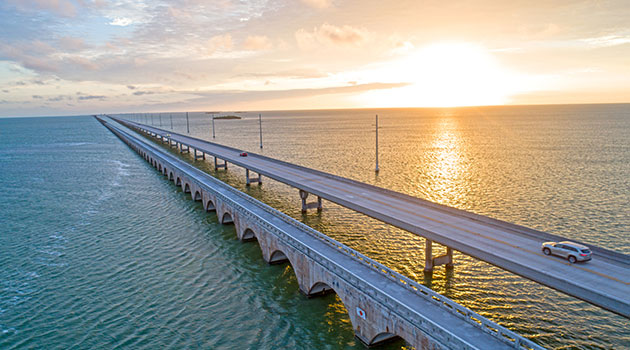Baby, it’s cold outside—and winter is just getting started.
With the shortest days of the year upon us, the world is increasingly filled with artificial lights and long nights. And while there’s something undoubtedly scrumptious about curling up with a warm blanket, spiced tea, and good book, another type of holiday treat exists that’s even more decadent than the richest mug of hot chocolate: spending the year’s coldest weeks in paradise.
Florida’s Overseas Highway is the perfect place to plot a winter escape.
The route spans 150 sunshine-soaked miles and incorporates 42 bridges as it runs from Miami to Key West, the southernmost point in the continental United States. Along the way, the highway—the final southward extension of legendary U.S. Route 1, and, technically, part of the National Florida Keys Marine Sanctuary—traverses over the crystalline waters of the Gulf of Mexico and skips across tropical islets like a stone on a pond.
If the only white you want to see this winter is the sand on a palm frond-framed beach, this trip’s for you.
Miami
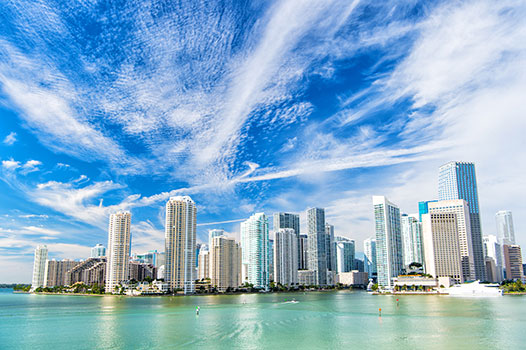
Your journey begins in this colorful port town, boasting enough unique culture to last through the winter—and then some.
Heavily influenced by its large Cuban population, the city is home to Little Havana, a neighborhood just west of downtown Miami that's teeming with the island’s signature style, food, and music. Traveling the strip of Calle Ocho will guide you past cigar shops, Cuban cafes, and Maximo Gomez Park, where locals can often be found playing the Cuban favorite, dominoes.
Miami also claims the record for highest concentration of Art Deco buildings in the world, many of which were preserved and can still be found today in the sassy seaside neighborhood of South Beach. Art of other persuasions can be viewed at the city’s stately Vizcaya Museum and Gardens, a regal grounds brimming with European antiques from as far back as the 16th century.
All of this, of course, is to say nothing of Miami’s renowned nightlife, beach life, and laid-back lifestyle.
And the trip down Overseas Highway only gets sunnier.
Key Largo
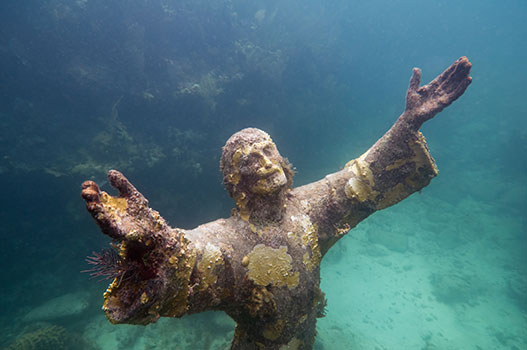
The first major key the highway passes is also the largest. But Key Largo dedicates most of that room to natural preservation sites.
The island, located 61 miles south of Miami proper, is home to John Pennekamp Coral Reef State Park, the first underwater reserve in the country. Here, visitors can observe an absurd variety of living coral and fish on snorkeling and scuba tours, aboard a glass-bottomed boat, or while piloting a kayak or paddle board.
Crocodile Lake National Wildlife Refuge is another protected portion of Key Largo where the island’s indigenous mangrove forests, salt marshes, and swamp wildlife can be found in their natural state. You can also arrange for a planned interaction with the area’s animals at one of the island’s dolphin swimming sites.
And the key marks the beginning of the Florida Keys Overseas Heritage Trail, a 76-mile corridor following the old railroad route, crossing 23 historical bridges and passing by multitudes of other historical sites.
Marathon
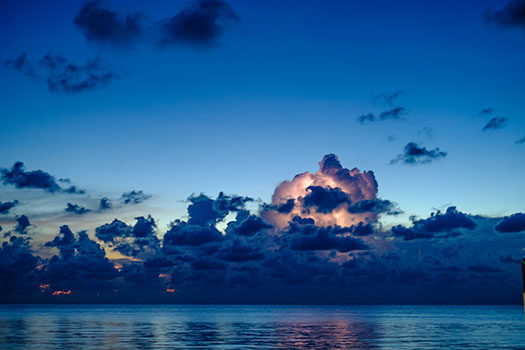
Free Ebook: Road Trips of America
Come along for the ride as we guide you through some of the best road trips in the country. Whether you’re a history buff, cultural connoisseur, or nature lover, we’ve covered all the sights and attractions in each state you won’t want to miss.
Enter your email address for your free copy!They say that life’s not a sprint, and the peaceful pace of life at Marathon is a sun-soaked reminder of why.
The area is technically a group of islands that represent the approximate halfway point between Key Largo and Key West—and with volume comes variety, as the clutch of keys offers plenty in the way of wildlife, from dolphins to stingrays to sea turtles.
Visitors especially interested in the animals’ welfare can visit the Turtle Hospital or Dolphin Research Center for a chance to see and learn about the aquatic creatures up close and personal.
Marathon also offers access to Pigeon Key, a five-acre island that’s virtually unchanged from its cultural heyday in the early 1900s. And it’s not just the island’s architecture that makes it historical; Pigeon Key served as base camp for the workers who put together the Overseas Highway itself.
Aside from their landmark engineering achievement, the workers left behind Seven Mile Bridge, the largest segmented bridge in the world which connects the Middle Keys to the Lower Keys.
Key West
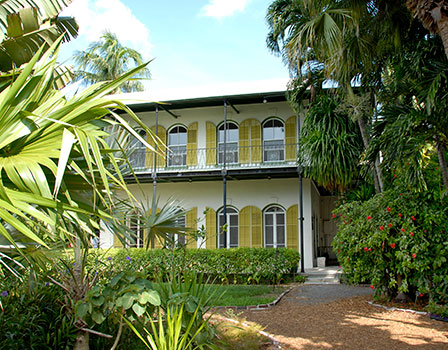
The self-declared Conch Republic is a lot like the shellfish it takes its name from: strangely beautiful.
The island’s vantage point at the proverbial tip of the country has attracted artists, writers, and other offbeat individuals for decades, adding a fat dollop of fascinating culture to the area’s already stunning vistas.
Key West’s siren song is especially strong for literary types: The island is home to more writers per capita than any other city in the country. Past residents include legends like Tennessee Williams, Robert Frost, and Ernest Hemingway, whose house has been turned into a popular museum visited by thousands of tourists—and plenty of cats. Today, more than 100 published authors live on the island, which may be why it plays host to an internationally renowned literary seminar each January.
Still, Key West’s art scene shines in other areas. The island’s streets are bursting with art galleries showcasing work of all mediums, while its famed Mallory Square acts as a gathering spot each evening for local musicians, magicians, mimes, jugglers, and other street performers—and makes for a great place to watch the sunset.
Tourists who want to tone down the attractions can find plenty to do, too, like visiting the famous buoy acting as the official marker for the country’s southernmost spot. Fort Zachary Taylor State Park also offers quieter beaches, and the chance to explore a historic site that saw action in the Civil and Spanish-American wars.
Key West also has no shortage of the tropical Florida fauna and flora that make the state such an enviable destination: a gift truly fit for the holidays.
